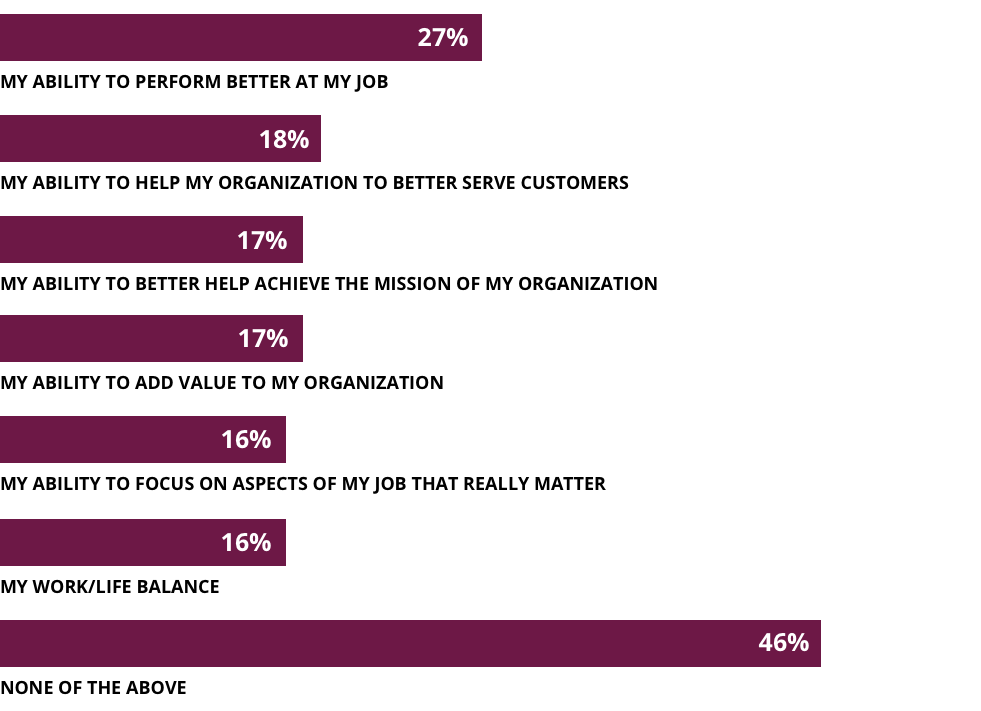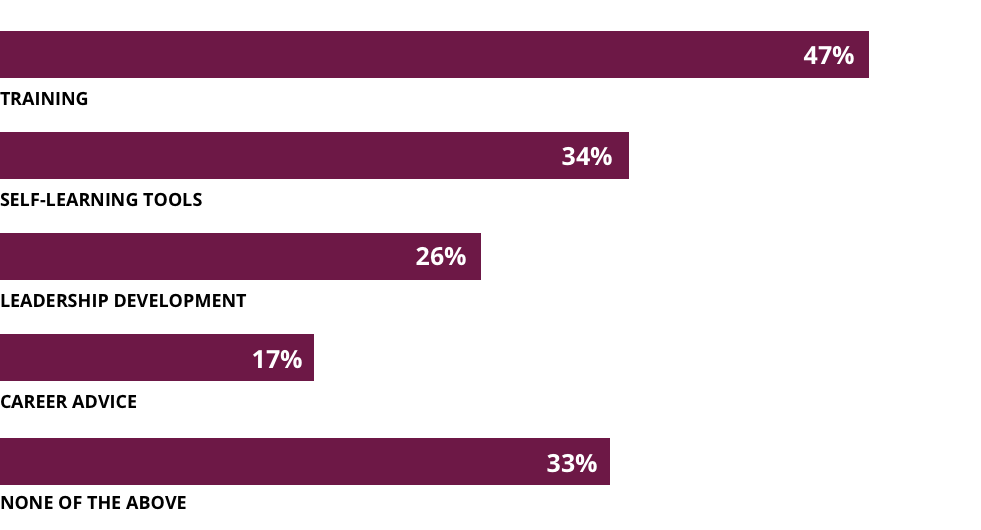Report
The missing ingredient in successful technology implementations in nonprofit organizations: People

An Eagle Hill Consulting survey reveals that only 23 percent of the US workforce thinks that new technology has had a positive impact on their organizations. This finding has significant relevance for nonprofit organizations that seek to use data, analytics and productivity tools to more effectively deliver on their mission.
Continuous change is the new normal for mission-based organizations that must remain relevant and impactful in a constantly changing world. Nonprofit organizations face the unique requirement to demonstrate ROI based on mission-critical impact. Investments in technology must be measured by their return on mission-driven activities. Identifying where the organization does not realize anticipated outcomes from their technology investments is critical. But, along with their private-sector peers, nonprofit organizations are missing the mark on ROI.
This miss comes down to one crucial ingredient: people. Too often the justification for major technology investments is based on anticipated benefits such as revenue, membership, or productivity gains. This focus does not account for the critical role of the workforce in not just adopting but also in optimizing the use of the new technology in day-to-day business practices. This is where lessening of returns can occur. And it’s why so many technology projects fail to deliver on time, on cost, or at all.
With new technology so central to nonprofit organizations, it is vital to engage the people using it in the selection, development, and testing stages of technology innovation. It is also critical to engage them throughout the implementation and after, when the real benefits of technology are felt by stakeholders.
The Eagle Hill Technology in the Workplace Survey of US employees shows a gap between organizations’ perceived value from their technology investments and how their stakeholders experience them. Organizations are routinely not maximizing ROI from technology change. Technology alone is not a silver bullet. Its impact comes from how it supports organizational models—and from what people do with technology. This is why maximizing technology return requires that new technology solutions work for and are understood by the employees using them.
Stakeholders see a gap between investment and impact
Employees intuitively understand that tech advances offer exciting possibilities. Yet as they see it, technology investments do not necessarily improve performance (Figure 1). While 31 percent say that their employer introduced a new technology in the last two years, only 19 percent say the organization invests in the right technology to support them. Just 23 percent think technology change has had a positive impact on their organization.
JUST 19 percent OF WORKERS SAY THEIR ORGANIZATION INVESTS IN THE RIGHT TECHNOLOGY TO SUPPORT THEM.
Figure 1: A minority of employees say technology at work is improving how they perform the job.
Q: At work, technology (automation, AI, robotics) has improved the following:

Source: The Eagle Hill Consulting Technology in the Workplace Survey 2020
Stakeholders find that support is in short supply
The survey suggests that stakeholders are not confident about technology change because they are not getting necessary support from their organization. Over two-thirds of workers say they need more skills to adapt to advancing technology. Yet only 22 percent report that their organization gives them the right level of support to understand and benefit from new technology solutions. Training is the strongest area of support, while self-learning tools, leadership development, and career advice are less so (Figure 2).
ONLY 22 percent OF WORKERS GET THE RIGHT LEVEL OF SUPPORT TO BENEFIT FROM NEW TECHNOLOGY.
Figure 2: Employees are not getting all the support they need to respond to technology change.
Q: In which of the following areas is your employer providing you with the right support to respond to the changing requirements of work?

Source: The Eagle Hill Consulting Technology in the Workplace Survey 2020
Stakeholder input is what’s missing
To give stakeholders (employees, volunteers, clients, etc.) the right support, organizations should ask what they need in the first place—yet less than 2 in 10 employees say that they are asked for their input.
Getting the most from technology investments means recognizing the human factors in embracing and maximizing change. Start with these actions:

Ask employees, volunteers, and stakeholders what they need. Really! People are the linchpin of all successful technology change. Yet most organizations either overlook the people factor entirely or make the wrong assumptions about it. It is critical to hear directly from stakeholders how they can (or can’t) integrate a new technology into their day-to-day activities. To do this, leaders can engage a diverse group of stakeholders in scenario-based planning. By getting feedback and engaging the frontline in decisions rather than working in isolation, organizations can tap into the full potential of technology solutions.

Connect work today and tomorrow. Strategic workforce planning enables organizations to understand the impact of a new technology on the current and future workforces. Analyzing the proficiency and skills in the current workforce identifies gaps against future state demands for serving stakeholders and meeting organizational goals. To address these gaps, organizations can pursue the following approaches:
- Building skills through training and mentoring.
- Buying skills through hiring.
- Borrowing skills by contracting with gig workers.
- Bridging skills through colleague redeployment or transitions out.

Build a culture of adoption. In the absence of a culture that embraces new technologies and supports integrated planning, no technology solution will deliver the anticipated outcome. Starting at the top, leaders must actively represent the culture of change and demonstrate its behaviors. From day one, employees must know what is expected of them in terms of performance and actions. Instilling adoption mindsets will lead to behaviors and habits that are accentuated by technology to drive performance.

Get everyone change ready. Constant change is the status quo in today’s world. Successful organizations will build the ability to develop strong “change muscles” across the workforce. Put simply, employees must be comfortable with change. They must be nimble, adaptive, and completely at ease with change as an ever-present influence in their work life. Leaders can help build this muscle by communicating the strategic vision, setting expectations, acknowledging and rewarding resilience, and soliciting feedback.
Technology change will continue to reshape organizations in ways we cannot imagine today—and faster than many might assume. What’s the best way to take full advantage of the opportunities ahead to make technology work for the organization? Make technology work for people.
Methodology
The Eagle Hill Consulting Technology in the Workplace Survey 2020 was conducted online by Ipsos in January 2020. The survey included 1,003 respondents from a random sample of employees across the United States. The survey polled respondents on aspects of the impact of technology (such as artificial intelligence, automation, and robotics) on their current and future work environments.

